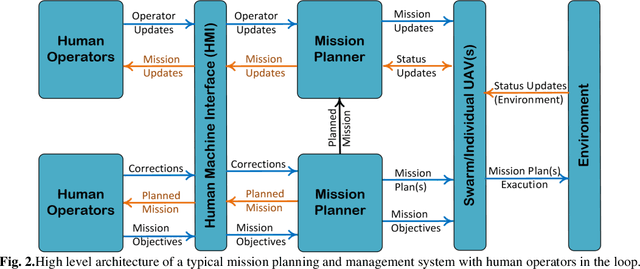Current Advancements on Autonomous Mission Planning and Management Systems: an AUV and UAV perspective
Paper and Code
Jul 10, 2020
Advances in hardware technology have enabled more integration of sophisticated software, triggering progress in the development and employment of Unmanned Vehicles (UVs), and mitigating restraints for onboard intelligence. As a result, UVs can now take part in more complex mission where continuous transformation in environmental condition calls for a higher level of situational responsiveness. This paper serves as an introduction to UVs mission planning and management systems aiming to highlight some of the recent developments in the field of autonomous underwater and aerial vehicles in addition to stressing some possible future directions and discussing the learned lessons. A comprehensive survey over autonomy assessment of UVs, and different aspects of autonomy such as situation awareness, cognition, and decision-making has been provided in this study. The paper separately explains the humanoid and autonomous system's performance and highlights the role and impact of a human in UVs operations.
 Add to Chrome
Add to Chrome Add to Firefox
Add to Firefox Add to Edge
Add to Edge